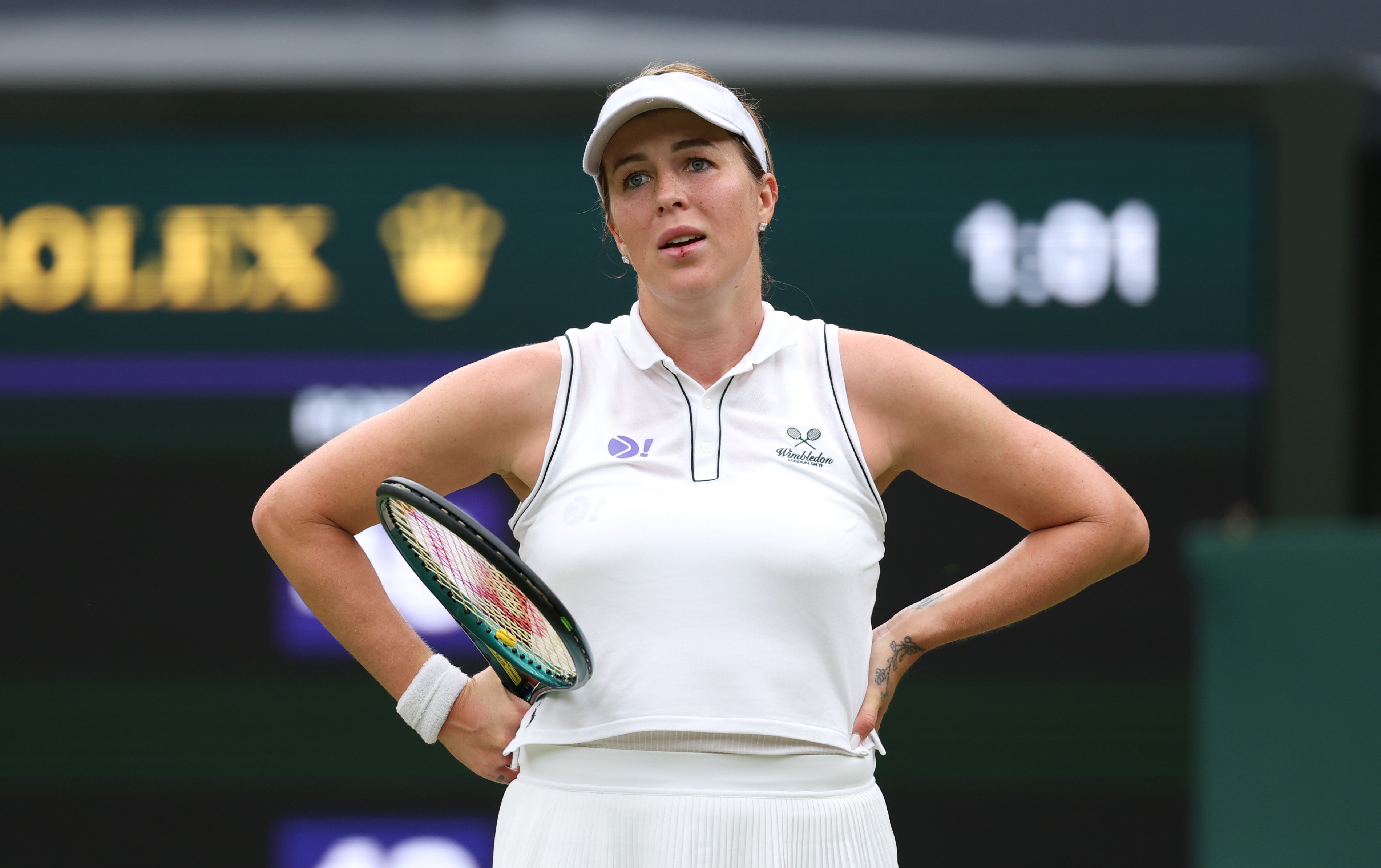Anastasia Pavlyuchenkova claimed that a game was ‘stolen’ from her in her fourth-round Wimbledon match with Sonay Kartal on Sunday, following a failure of the electronic line-calling (ELC) system.
Britain’s Kartal struck a ground shot well beyond the baseline, as proven by a video replay, but the new ELC technology had failed, meaning the error was not called.
• Follow Pavlyuchenkova vs Kartal live, plus other Wimbledon updates on Sunday
A brief pause in action ensued, with neither player sure how to proceed, before the umpire addressed the crowd and picked up a phone and spoke to colleagues.
After a few minutes, the umpire informed those present on Centre Court that the point would have to be replayed, despite the fact that it should clearly have been Pavlyuchenkova’s – a point that would have seen her hold serve for a 5-4 lead in the first set.
Pavlyuchenkova lost the ensuing point, battled back and forth with Kartal briefly, then ultimately lost the game. With that, Kartal broke serve and had a chance to serve for the set.
Former French Open runner-up Pavlyuchenkova, 34, stayed calm during the game but let out her frustration during the ensuing changeover.
She told the umpire, “You took the game away from me,” with the official appearing to tell her that the rules around the system were to blame. “They stole the game from me, they stole it,” Pavlyuchenkova replied.

In these situations, rare as they are, officials cannot rely upon or use the video replays that broadcasters show.
Pavlyuchenkova in fact broke Kartal’s serve in the next game to make it 5-5, before both players held serve to force a tiebreak. Pavlyuchenkova won that tiebreak, meaning her lost point cost her nothing in the long run, although it clearly caused her stress at the time and might have meant she had to expend more energy in what became a longer set.
Get 4 months free with ExpressVPN
Servers in 105 Countries
Superior Speeds
Works on all your devices
Try for free
ADVERTISEMENT. If you sign up to this service we will earn commission. This revenue helps to fund journalism across The Independent.
Get 4 months free with ExpressVPN
Servers in 105 Countries
Superior Speeds
Works on all your devices
Try for free
ADVERTISEMENT. If you sign up to this service we will earn commission. This revenue helps to fund journalism across The Independent.
This year marks the first edition of Wimbledon to feature the ELC, which replaces human line judges after 147 years of their work at the grass-court grand slam.
Electronic line calling was created by Hawk-Eye, the pioneering company leading the way in sports technology. The first Hawk-Eye system was developed by British computer expert Paul Hawkins in 2001, and has been deployed by multiple sports including cricket for leg-before-wicket decisions and football’s goal-line technology.
Hawk-Eye replays have been used in tennis since debuting at the US Open in 2006, allowing players to challenge questionable calls. But that will soon be a thing of the past as the same technology feeds back results in play, known as ELC or Hawk-Eye Live. The Australian and US Opens had already replaced line judges with electronic calling, although the French Open still relies on the human eye. That is a little easier at Roland Garros, where the ball’s landing mark tends to show up on the dusty clay surface.

Players have widely supported the rollout, and Wimbledon organisers felt the tournament could become antiquated if it failed to keep up with technological advances in the game.
ELC was first used as an experiment at the ATP Next Gen Finals in Milan in 2018, and was adopted more widely during the Covid-19 pandemic. It has been used on all courts across ATP Tour events in 2025.
The ELC technology works by tracking balls using 18 cameras set up around the court. The cameras capture the ball’s movement as a computer interprets the location in real time, producing an accurate three-dimensional representation of the court and the ball’s trajectory within it.
An automated voice mimics that of a line judge, with a loud call of “out!”, “fault!” or “foot fault” emitted within a tenth of a second. A video operator oversees the technology from an external room. Chair umpires continue to take their seat overlooking the court to enforce the rules of the game.





